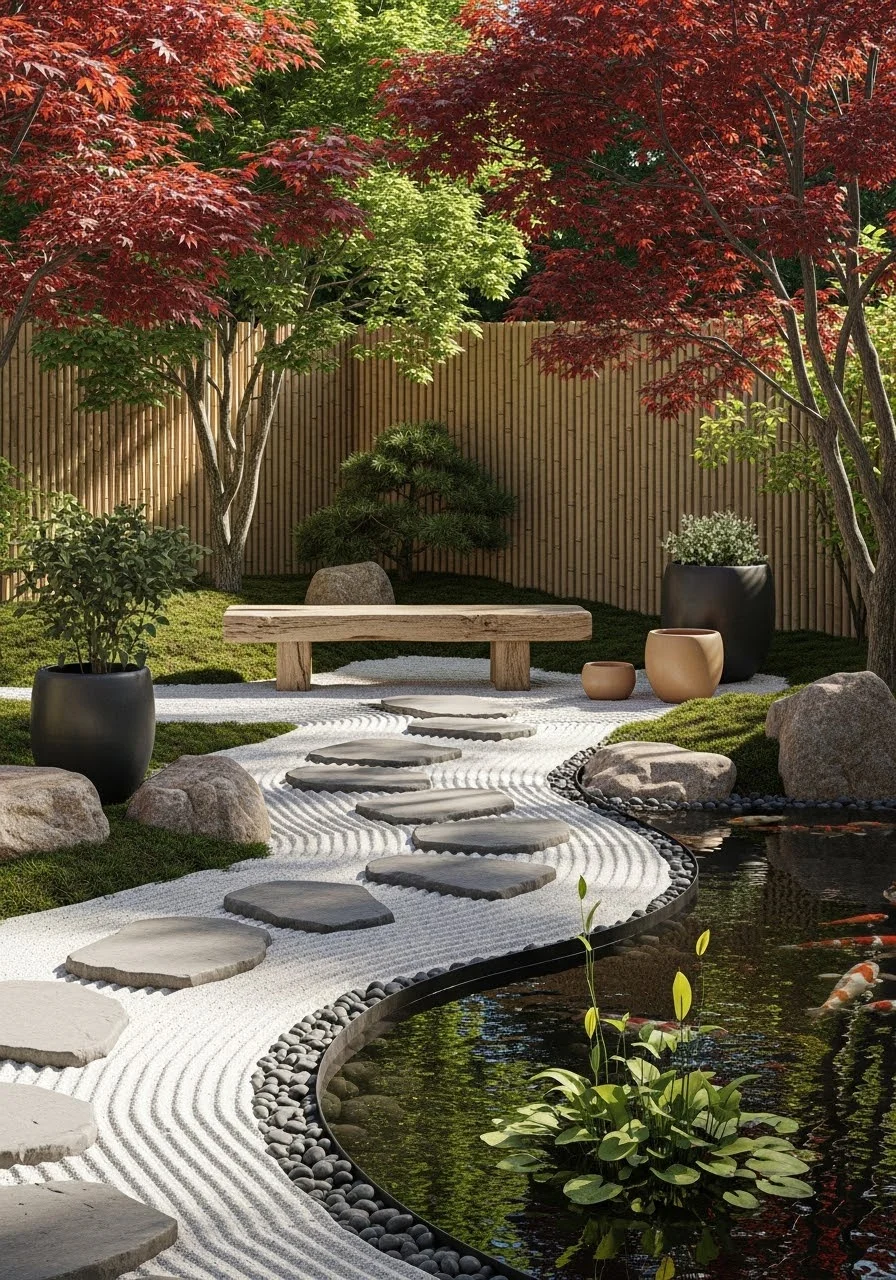There’s a quiet magic in a Japan garden — the way stones, water, and plants come together in perfect balance. Whether you’ve wandered through the serene gardens of Kyoto or admired photos online, you know that Japanese gardens evoke harmony, simplicity, and natural beauty.If you’ve ever dreamed of bringing that tranquility into your own backyard, you’re in the right place. In this guide, you’ll uncover Secret Japan Garden Tips! that will help you design, style, and maintain a space inspired by timeless Japanese tradition — right at home.🍃 Introduction: The Essence of a Japanese GardenA Japanese garden is more than just a collection of plants. It’s a living work of art — a place for reflection, mindfulness, and calm.Rooted in centuries-old design principles, these gardens aim to capture the essence of nature in miniature form. Every stone, tree, and ripple of water is intentional, creating a peaceful rhythm that helps you slow down and reconnect with the world around you.Whether your space is large or small, you can use these Secret Japan Garden Tips! to infuse a sense of balance, simplicity, and Zen beauty.🪨 1. Embrace the Philosophy of Wabi-SabiAt the heart of Japanese garden design lies wabi-sabi — the appreciation of natural imperfections and the beauty of simplicity.This concept encourages you to choose materials and elements that feel authentic, aged, and organic. Think weathered stones, moss-covered paths, and uneven textures that tell a story.🌿 Secret Tip: Avoid overly polished materials. Let nature lead. A slightly cracked stone or uneven pathway adds charm and character.🏞️ 2. Start with the Three Core Elements: Stones, Water, and PlantsA true Japanese garden balances stones, water, and plants — each symbolizing nature’s harmony.🪨 Stones – The Skeleton of the GardenArrange stones thoughtfully to mimic natural landscapes — mountains, riverbanks, or islands.Use larger stones as focal points.Smaller ones can outline paths or surround ponds.Avoid symmetry; the beauty lies in asymmetry and flow.💧 Water – The Soul of CalmWater represents life and tranquility. You can include it through:A koi pond or small waterfallA bamboo fountain (shishi-odoshi) for soothing soundA dry gravel river (in Zen rock gardens) symbolizing flowing water🌸 Plants – The Breath of the GardenChoose plants that reflect the seasons. Think:Evergreens for structureMoss for softnessBamboo, maple, or cherry trees for seasonal beauty🌸 Secret Japan Garden Tip: Limit your color palette — green should dominate. Use flowers sparingly for subtle contrast.🌾 3. Create a Sense of Flow and PathwaysJapanese gardens are meant to be experienced slowly. The pathways guide visitors on a peaceful journey through nature.Use stepping stones instead of straight paths to slow movement.Add curves and gentle turns to make the space feel larger and more natural.Incorporate bridges over small streams or gravel beds for depth and symbolism.🪴 Pro Tip: Each step should feel intentional — like a mindful walk rather than a shortcut.🌙 4. Add Symbolic Garden FeaturesPart of the charm of Japanese gardens lies in their symbolism. Every feature carries meaning.Lanterns (Tōrō): Represent light guiding the soul — perfect near water or paths.Bamboo Fences: Offer privacy and a rustic aesthetic.Water Basins (Tsukubai): Traditionally used in tea gardens for ritual purification.Bridges: Symbolize the transition from the physical to the spiritual world.🌕 Secret Japan Garden Tip: Keep ornaments minimal — one or two key pieces are better than clutter.🌳 5. Choose Authentic Japanese PlantsSelecting the right plants is essential to capture the garden’s spirit. Here are some favorites used in authentic Japanese landscapes:Japanese Maple (Acer palmatum) – stunning fall colorsBamboo – elegant, tall, and symbolic of strengthAzaleas – for a touch of seasonal bloomMoss – for texture and ageCherry Blossom (Sakura) – timeless and symbolic of beauty and renewalPine Trees – representing endurance and longevity🌸 Pro Tip: Combine evergreen plants with seasonal blooms for year-round interest.💡 6. Lighting Matters: Subtle and SoftIn traditional Japanese gardens, lighting is never harsh. The goal is to highlight beauty indirectly.Use:Soft solar lanterns near pathwaysStone lanterns for authentic charmHidden spotlights to emphasize key elements like trees or water features✨ Secret Japan Garden Tip: Focus light downward, never directly at eye level — this maintains the peaceful atmosphere.🌾 7. Add a Zen Rock Garden (Karesansui)If you have limited space, a Zen rock garden is the perfect solution. These minimalist dry gardens use gravel, sand, and stones to represent natural landscapes.Rake gravel in flowing patterns to symbolize water.Place larger rocks to represent islands or mountains.Add moss for a touch of life and softness.🪨 Pro Tip: Raking your Zen garden can be a form of meditation — it helps focus the mind and release stress.🧘 8. Incorporate Mindfulness and MaintenanceA Japanese garden is not meant to be static — it’s alive and ever-changing. The act of caring for it is part of its spiritual value.Trim plants gently to maintain their natural shape.Remove fallen leaves or debris to keep harmony.Enjoy the process — pruning and cleaning can be meditative acts.🌿 Secret Japan Garden Tip: Visit your garden at different times of day — morning mist, afternoon sunlight, and evening glow each tell a different story.🍂 9. Seasonal Beauty and BalanceOne hallmark of Japanese gardens is celebrating the changing seasons.Spring: Cherry blossoms and azaleas bloom.Summer: Lush greens and cool water features dominate.Autumn: Japanese maples explode in fiery reds and oranges.Winter: Bare branches and stone structures create a peaceful, minimal scene.🌸 Pro Tip: Plan your garden with all four seasons in mind — it ensures year-round beauty and reflection.🌸 Conclusion: Discover the Secret to a Japan GardenA Japanese garden is not about perfection — it’s about peace, balance, and reflection. With these Secret Japan Garden Tips!, you can create a sanctuary that speaks to your soul, no matter the size of your space.From mossy stones to gentle pathways, every detail brings you closer to nature’s calm rhythm. So grab your tools, breathe deeply, and begin your journey toward your own Zen-inspired paradise.🌿 Secret Japan Garden Tip: The best gardens aren’t just seen — they’re felt. Let yours tell a quiet, timeless story.

